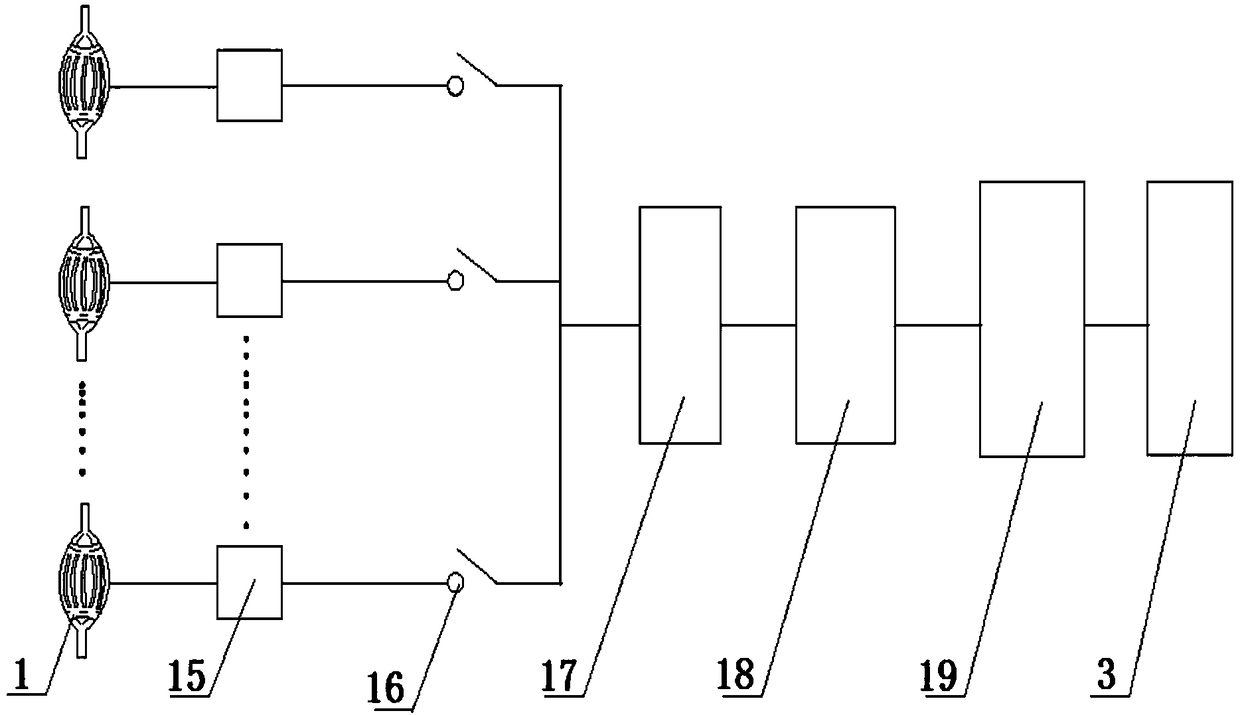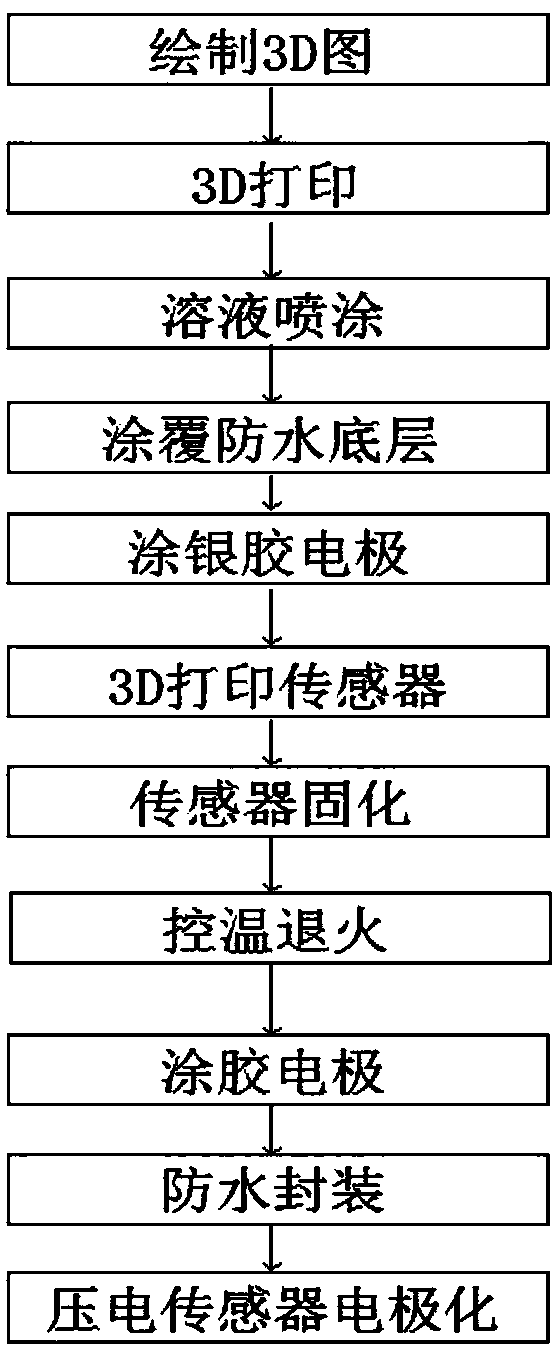Piezoelectric flexible sensing device
A sensing device, flexible sensor technology, applied in pressure sensors, sensors, medical science and other directions, can solve the problems of high preparation cost, complex preparation process, complex signal components, etc., to achieve good product stability, simplified preparation process, application Environmentally friendly effect
- Summary
- Abstract
- Description
- Claims
- Application Information
AI Technical Summary
Problems solved by technology
Method used
Image
Examples
Embodiment 1
[0035] The piezoelectric flexible sensing device involved in this embodiment is as figure 1As shown, its main structure includes a piezoelectric flexible sensor 1, an EMG signal pre-processing module 2, a Bluetooth wireless transmitting module 3, a Bluetooth wireless receiving module 4, an EMG signal analysis and processing module 5, a prosthetic control module 6, and a charging module 7 , built-in circuit power supply module 8, electrode 9, muscle tissue 10, suture thread 11, preamplifier 15, multi-channel analog switch 16, filter 17 for removing noise interference, post-stage amplifier 18, single-chip microcomputer analog-to-digital conversion unit 19 and prosthesis The power module 20; the piezoelectric flexible sensor device includes a built-in part and an external part, the built-in part is installed on the surface of the residual limb muscle, and the external part is installed in the prosthesis; wherein the piezoelectric flexible sensor 1 of the built-in part is fixed on ...
Embodiment 2
[0039] The preparation method of the piezoelectric flexible sensor involved in this embodiment, its basic process includes the following steps:
[0040] (1) Draw 3D maps: MRI imaging of the muscles of the residual limbs, according to the MRI structure, refer to the standard human anatomical muscle tissue map (such as ZygoteBody (https: / / www.zygotebody.com)), draw the 3D of the corresponding muscles picture;
[0041] (2) 3D printing: Input the muscle 3D model into the 3D printer, and use polylactic acid PLA raw material to 3D print the corresponding muscle model. The printing temperature is controlled between 190 degrees and the heating temperature of the bottom plate is controlled between 60 degrees. According to the standard fusion deposition (FDM) 3D printer process, using the usual filamentary materials to print; smooth the surface of the printed model: in a well-ventilated area, wear non-latex (nitrile or neoprene) gloves to place the model on the bottom In a sealed conta...
Embodiment 3
[0055] This embodiment further explains the process of 3D printing piezoelectric flexible sensor 1: general 3D printing uses wax, powder, filamentary metal or plastic raw materials, and this embodiment uses liquid solution slurry for 3D printing technology; The 3D printing process adopts the printing structure of the mobile bottom plate and the stepping motor drive for a large distance. By adjusting the moving scanning speed and controlling the viscosity and temperature of the slurry, combined with the smallest nozzle of the precision micro-injection pump, the micro-structure printing is realized; the print head part Including the micro-motor controlled needle valve nozzle and stainless steel barrel, the sliding upper end in the stainless steel barrel can be equipped with a chemically inert Teflon piston print push rod, the edge of the Teflon piston is sealed with the stainless steel barrel, and the print head part also includes Heating components and nozzle temperature control...
PUM
 Login to View More
Login to View More Abstract
Description
Claims
Application Information
 Login to View More
Login to View More - R&D
- Intellectual Property
- Life Sciences
- Materials
- Tech Scout
- Unparalleled Data Quality
- Higher Quality Content
- 60% Fewer Hallucinations
Browse by: Latest US Patents, China's latest patents, Technical Efficacy Thesaurus, Application Domain, Technology Topic, Popular Technical Reports.
© 2025 PatSnap. All rights reserved.Legal|Privacy policy|Modern Slavery Act Transparency Statement|Sitemap|About US| Contact US: help@patsnap.com



